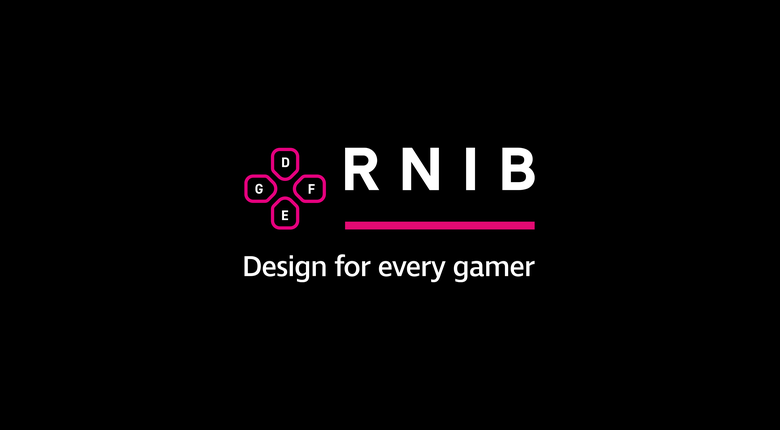Symposium
Leading on from the RNIB’s accessible gaming research , October 2022 saw RNIB hold, in conjunction with Abertay University in Dundee, the Accessible Gaming Symposium, bringing together both players and industry professionals from all over the world in a hybrid setting. Both in-person and online discussions were had as to the current state of game accessibility, what needed to change to move things forward and the possibilities for the future.
This event was a resounding success with discussion on frustration points and potential solutions. Some of the most experienced stakeholders from studios across the world including Activision Blizzard King, Ubisoft, Xbox, EA and many others joined these discussions, cementing a brighter future for any gamers with vision impairments who need accessibility features.
Design for Every Gamer Webinars
RNIB supports VI Gaming peer-support groups for adults who would like to connect with other blind and partially sighted people with an interest in video games and gaming. The groups are a fun, social space to meet other gamers, chat about the games you’ve been playing, and share accessibility tips and advice.
The groups are region-specific ad cover much of the UK. They are led by RNIB volunteers, and group meetings take place on Microsoft Teams and Discord. Along with regular group meetings online, VI Gaming Group volunteers work in collaboration with RNIB’s Community Connection team to hold gaming-themed events.
We are currently looking for Community Lead Volunteers to lead and support new VI Gaming groups in areas not covered by our existing groups. To find out about your nearest VI Gaming group, or to get involved in volunteering for RNIB, please call the RNIB Helpline on 0303 123 9999 or email [email protected].
Previous RNIB VI Gaming Group Community Events:
Next steps
Looking forward, RNIB strives to become a strong supporter and stakeholder in the development of accessibility in videogames, collaborating with developers, publishers, big and small across the world to make sure, regardless of what level of vision you have, you can play titles that are popular, niche or anywhere in between. RNIB knows that without the input of players, particularly those with first-hand experience of gaming with vision impairments, accessibility cannot improve and wishes to unite end users and developers creating the next generation of games in a transparent, ongoing exchange of information and feedback. This will help to ensure that the features and structure everyone needs to play are present.
Let's work together
We believe that creating experiences that are enjoyable, immersive and inclusive requires the participation of the people who will use them.
Our team of accessibility experts works with gamers with different levels and types of vision impairment to review concepts and designs to offer advice.
Professional Services
RNIB professional services include strategic planning and game concept reviews, game design expert and end user testing, recruitment for play testing and outreach and communication to the community of gamers with vision impairments.
Please share as many details of your project as you can. For example, your aims, timeframe and budget. We’ll be in touch shortly.
Academic and Industry Research
We collaborate and support research on accessible gaming that aims to make it possible for more blind and partially sighted gamers to play the games they want to play and on the platform of their choice. We have an extensive background of working with universities, industry and other stakeholders on research studies across a number of different areas.









